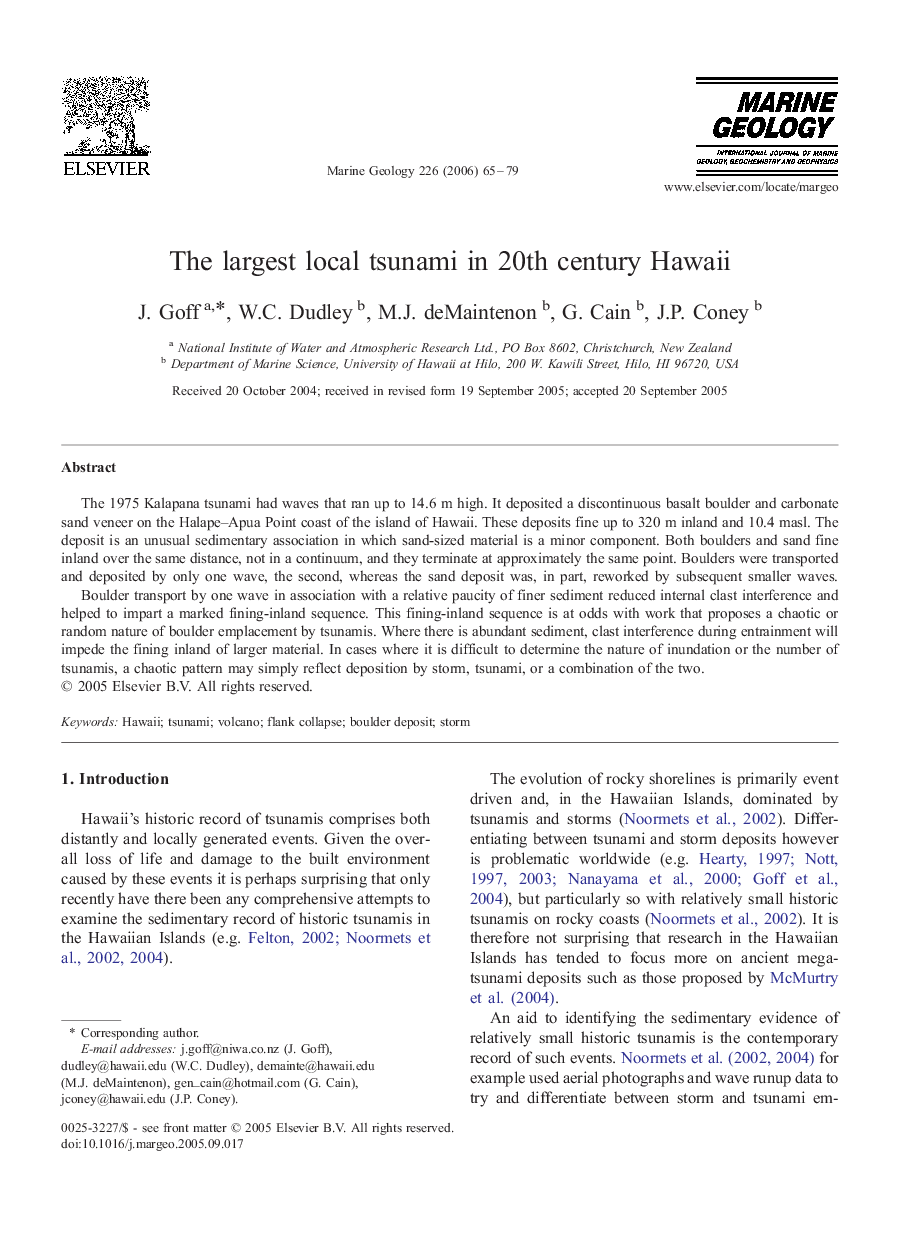| Article ID | Journal | Published Year | Pages | File Type |
|---|---|---|---|---|
| 4719751 | Marine Geology | 2006 | 15 Pages |
The 1975 Kalapana tsunami had waves that ran up to 14.6 m high. It deposited a discontinuous basalt boulder and carbonate sand veneer on the Halape–Apua Point coast of the island of Hawaii. These deposits fine up to 320 m inland and 10.4 masl. The deposit is an unusual sedimentary association in which sand-sized material is a minor component. Both boulders and sand fine inland over the same distance, not in a continuum, and they terminate at approximately the same point. Boulders were transported and deposited by only one wave, the second, whereas the sand deposit was, in part, reworked by subsequent smaller waves.Boulder transport by one wave in association with a relative paucity of finer sediment reduced internal clast interference and helped to impart a marked fining-inland sequence. This fining-inland sequence is at odds with work that proposes a chaotic or random nature of boulder emplacement by tsunamis. Where there is abundant sediment, clast interference during entrainment will impede the fining inland of larger material. In cases where it is difficult to determine the nature of inundation or the number of tsunamis, a chaotic pattern may simply reflect deposition by storm, tsunami, or a combination of the two.
